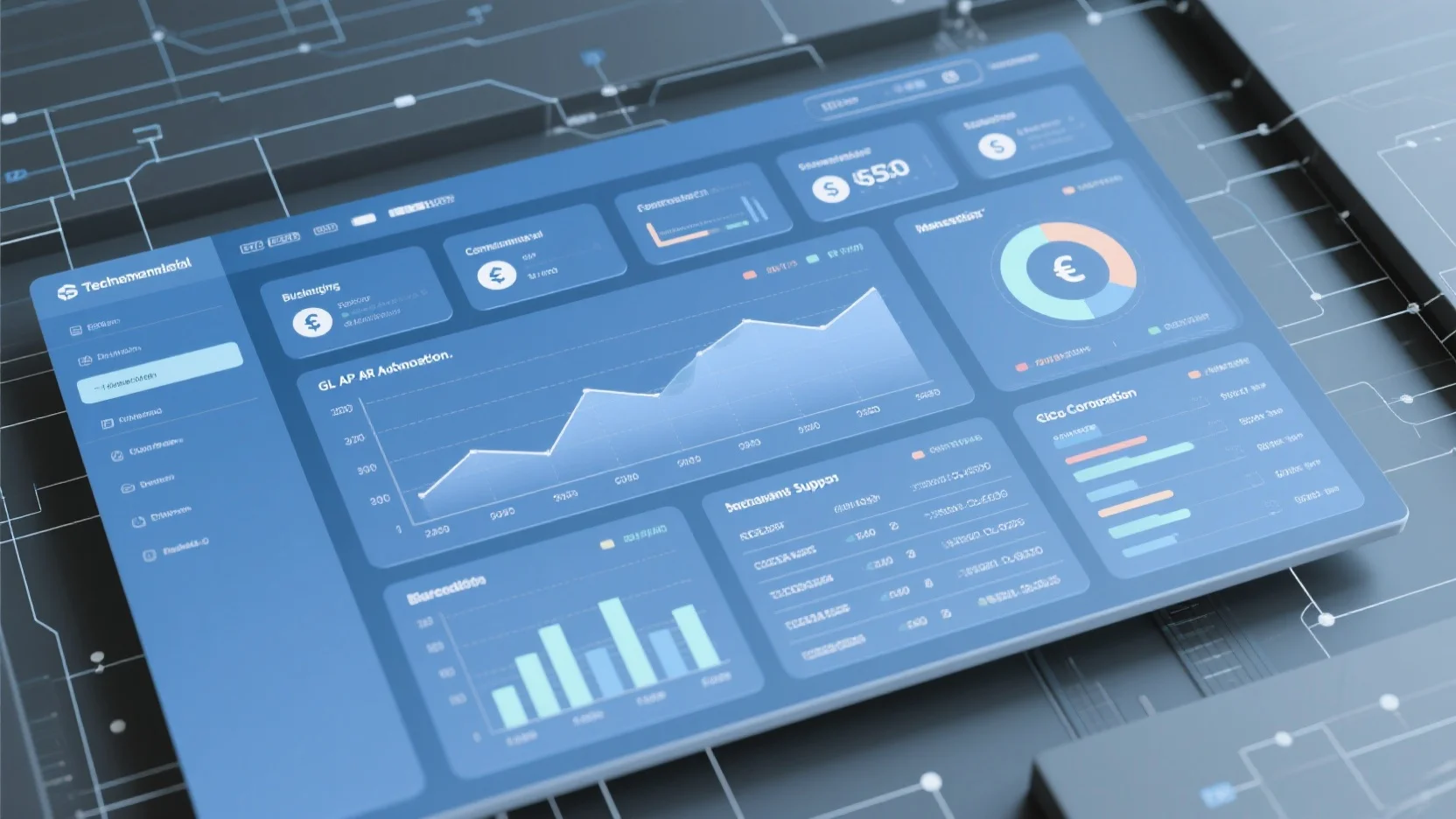Are you looking to streamline your business’s financial operations? According to Gartner, worldwide IT spending in 2025 is set to reach $5.75 trillion, highlighting the crucial role of technology in financial management. A financial management ERP offers premium features like GL AP AR automation, multi-currency support, and more. Compared to counterfeit or less – effective models, it provides real – time financial tracking and accurate forecasting. Leading US sources like Gartner and Deloitte back its importance. With a Best Price Guarantee and Free Installation Included, don’t miss out on this essential tool for financial success.
Financial Management ERP
Financial management stands at the heart of every successful business, with the right tools acting as the linchpin for efficient operations. Gartner projects worldwide IT spending to reach a staggering $5.75 trillion in 2025, with a 9.3% increase from the previous year (Gartner). This significant investment shows the growing importance of technology, especially in financial management.
Overview
Definition and Function
Financial management ERP is a specialized system designed to streamline and optimize financial operations within an organization. At its core, it’s about optimizing the utilization of money for a business, involving planning, budgeting, and foreseeing expenditure. The aim is to effectively manage financial resources and achieve profitability, stability, and long – term sustainability (Source: General financial management definition).
The General Ledger (GL) serves as the foundation of financial data in these systems. All transactions are recorded here, helping businesses track income, expenses, and overall financial performance in real – time. The Chart of Accounts organizes financial transactions, and Journal Entries ensure accuracy and auditability. Pro Tip: Regularly review your GL to catch any discrepancies early and maintain accurate financial records.
Difference from Other ERP Systems
While traditional ERP systems focus on integrating various business processes like manufacturing, supply chain, and human resources, financial management ERP zeroes in on financial operations. It emphasizes tasks such as accounts payable (AP), accounts receivable (AR), budgeting, and financial reporting. For example, an e – commerce company using a general ERP might manage inventory and shipping, but the financial management ERP will handle the money side, like reconciling payments from customers and paying suppliers.
GL, AP, AR Automation
The success rate of ERP implementations is on the rise, thanks to a focus on user experience that has led to simpler interfaces, more configuration flexibility, mobile functionality, and increased support. The 2025 AR/AP Automation Global Market Report shows that the AR/AP automation market is projected to grow from $2.24 billion in 2024 to $2.61 billion in 2025. This growth underscores the increasing adoption of automation in these areas.
A practical example is a mid – sized manufacturing company that implemented AR automation. By automating invoice generation and payment reminders, they reduced their average collection time by 20%, improving their cash flow significantly. Pro Tip: When implementing AP/AR automation, involve your finance team from the start to ensure the system meets their needs.
Multi – currency Support
As businesses expand globally, multi – currency support becomes crucial. Multi – level, multi – currency consolidation in modern ERP systems allows complex multi – level hierarchies in different currencies and alternate reporting hierarchies to be easily consolidated with a single click. For instance, a global retailer can use this feature to consolidate sales data from different countries, each with its own currency, into a single report.
This feature also simplifies international transactions. You buy and sell in different currencies every day, and exchange rates change daily. With a multi – currency ERP, you can automatically convert different currencies into a single unit of account, simplifying the tracking of revenue and expenses. Pro Tip: Look for an ERP system that supports real – time currency conversion to stay up – to – date with exchange rate changes.
Consolidation and Reporting
Consolidation is made seamless with financial management ERP. Systems like LionO360 ERP can consolidate financial data from global business locations, reducing costs and saving manual efforts. They can consolidate, translate, and report foreign currency in accordance with the latest standards and maintain a complete audit trail.
For a multinational corporation, this means they can quickly generate accurate financial reports for their entire organization, even with offices in multiple countries. This is essential for compliance and making informed business decisions. As recommended by leading financial software experts, regularly review your consolidation processes to ensure accuracy.
Budgeting and Forecasting
Financial forecasting and budgeting are critical for strategic planning. According to a 2022 survey by Deloitte, 62% of businesses consider accurate financial forecasting as crucial for navigating economic uncertainties and making informed decisions. Another study revealed that organizations with robust budgeting processes are 30% more likely to achieve their financial goals.
Advanced ERP finance modules can automate forecast modeling, integrating historical data and market trends to create more accurate financial projections. For example, a software company can use these projections to plan for new product development or expansion into new markets. Pro Tip: Leverage AI – powered forecasting tools in your ERP system for more accurate predictions.
Overall Market Trends
The financial automation market size exceeded USD 6.6 billion in 2023 and is poised to grow at around 14.2% CAGR from 2024 to 2032, propelled by the rising demand for cost reduction in financial processes. AI is also being used in financial management ERP to provide predictive analytics and financial forecasting, helping businesses anticipate market trends and currency fluctuations. Additionally, more tools are adding support for cryptocurrencies, allowing businesses to handle transactions in digital currencies.
Challenges for Financial Analysts
One of the major challenges for financial analysts is cybersecurity threats. Over the last decade, the rapid increase of security threats and breaches has put financial data in the crosshairs. Cybersecurity is no longer just an IT department responsibility; it requires close collaboration between finance and other business leaders.
Another challenge is keeping up with changing regulations, especially in the area of multi – currency reporting. Financial analysts need to ensure their ERP systems are compliant with the latest accounting standards across different countries. Pro Tip: Stay updated on industry news and regulatory changes by subscribing to finance – related publications.
Key Takeaways:
- Financial management ERP is essential for optimizing financial operations, with features like GL, AP, AR automation, multi – currency support, consolidation, and forecasting.
- The market for financial automation is growing rapidly, and AI is playing an increasingly important role.
- Financial analysts face challenges such as cybersecurity threats and regulatory compliance.
- Regularly review and update your ERP system to take advantage of new features and stay compliant.
Try our financial management ERP comparison tool to find the best system for your business.
FAQ
What is financial management ERP?
Financial management ERP is a specialized system crafted to streamline and optimize an organization’s financial operations. It focuses on planning, budgeting, and foreseeing expenditure to manage financial resources effectively, aiming for profitability, stability, and long – term sustainability. Detailed in our [Overview] analysis, it differs from general ERPs by centering on financial tasks.
How to implement GL, AP, AR automation in a business?
According to the 2025 AR/AP Automation Global Market Report, the adoption of such automation is on the rise. First, involve the finance team from the start to ensure the system meets their needs. Then, choose an ERP system with high – success implementation rates. Next, automate invoice generation and payment reminders. This can significantly improve cash flow, as seen in a mid – sized manufacturing company example.

Financial management ERP vs traditional ERP: What’s the difference?
Unlike traditional ERP systems that integrate business processes like manufacturing and supply chain, financial management ERP focuses solely on financial operations. It emphasizes tasks such as accounts payable, accounts receivable, budgeting, and financial reporting. For instance, an e – commerce firm uses a general ERP for inventory, while the financial one handles money – related aspects.
Steps for using multi – currency support in an ERP system?
To use multi – currency support effectively, first, select an ERP system that offers real – time currency conversion. This helps stay updated with exchange rate changes. Then, use it to consolidate sales data from different countries into a single report. Finally, leverage the feature to automatically convert various currencies into a single unit of account, simplifying revenue and expense tracking. Detailed in our [Multi – currency Support] section.
